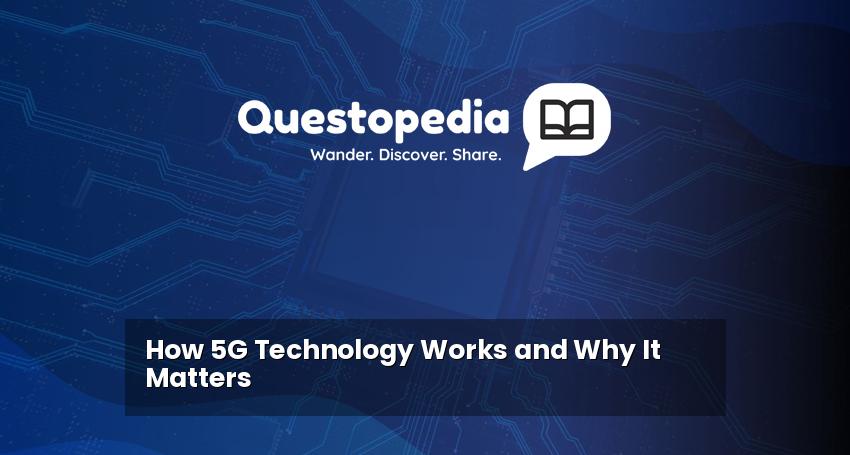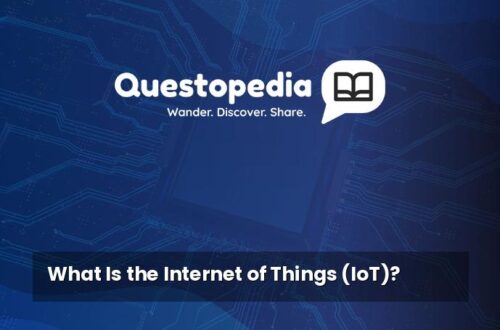How 5G Technology Works and Why It Matters
We hear a lot about 5G these days. It’s the next big thing in mobile technology, promising faster internet speeds and more connected devices than ever before. But what exactly is 5G, and how does it work? More importantly, why should you care about it? This blog post will break down the complexities of 5G in simple terms and explain its significance in our rapidly evolving digital world.
What is 5G? A Simple Explanation
Simply put, 5G stands for fifth generation. It’s the latest generation of wireless technology, succeeding 4G LTE. Think of it like upgrading from a bicycle to a high-speed train – both get you there, but one is significantly faster and more efficient. 5G technology offers substantially improved speed, lower latency (less delay), and greater capacity than previous generations.
How Does 5G Technology Work?
To understand how 5G works, let’s break it down into its key components:
1. Higher Frequency Bands
5G utilizes higher frequency bands, including millimeter waves (mmWave). These higher frequencies allow for much faster data transfer speeds. However, these frequencies have a shorter range and are more easily blocked by obstacles like buildings and trees. This is one of the challenges in deploying 5G networks effectively.
2. Small Cells
Because higher frequency signals have a shorter range, 5G networks rely on a denser network of small cells. These are smaller, low-power base stations that are placed closer together to ensure consistent coverage, especially in urban areas. Think of it as having more Wi-Fi routers strategically placed throughout a large building to ensure a strong signal everywhere.
3. Massive MIMO (Multiple-Input Multiple-Output)
MIMO technology uses multiple antennas at both the transmitter (base station) and receiver (your phone) to send and receive more data simultaneously. Massive MIMO, as the name suggests, takes this concept even further by using a very large number of antennas. This allows for increased capacity and efficiency, enabling the network to handle more users and devices at the same time.
4. Beamforming
Instead of broadcasting signals in all directions, 5G networks use beamforming technology to focus the signal in a specific direction, targeting a particular user or device. This improves signal strength and reduces interference, leading to faster and more reliable connections.
Why Does 5G Matter? The Benefits Explained
The improvements offered by 5G technology go far beyond simply faster downloads. Here’s why 5G is such a significant advancement:
1. Faster Speeds and Lower Latency
This is perhaps the most talked-about benefit. 5G can deliver download speeds that are significantly faster than 4G, potentially reaching gigabit speeds. Lower latency means less delay when sending and receiving data, making applications like online gaming, virtual reality, and augmented reality much more responsive.
2. Increased Capacity
5G networks can handle a much larger number of connected devices simultaneously. This is crucial in a world where everything from smartphones to smart refrigerators is connected to the internet. This increased capacity allows for the continued growth of the Internet of Things (IoT).
3. Enhanced Mobile Broadband
With faster speeds and lower latency, 5G enhances mobile broadband experiences. Think smoother video streaming, faster downloads, and more responsive online gaming on your mobile devices. This makes working, learning, and entertaining ourselves on the go much more seamless.
4. Mission-Critical Applications
The low latency of 5G opens up opportunities for mission-critical applications such as remote surgery, autonomous vehicles, and industrial automation. These applications require near-instantaneous response times, which 5G can provide.
5. Internet of Things (IoT) Expansion
5G technology enables the widespread adoption of IoT devices and services. From smart homes to smart cities, 5G provides the necessary infrastructure to connect and manage a vast network of devices, sensors, and machines.
The Future of 5G
5G is still in its early stages of deployment, and its full potential is yet to be realized. As networks continue to expand and more devices become 5G-enabled, we can expect to see even more innovative applications and services emerge. From revolutionizing industries to transforming the way we live and work, 5G technology is poised to play a pivotal role in shaping the future.
Conclusion
5G technology represents a significant leap forward in wireless communication. While the technical aspects can seem complex, the core principles involve utilizing higher frequencies, employing small cells, leveraging MIMO technology, and using beamforming to deliver faster speeds, lower latency, and increased capacity. Understanding how 5G works and its potential benefits is crucial for navigating the increasingly connected world of tomorrow. As 5G networks continue to roll out and evolve, it will undoubtedly reshape our digital experiences and open up a whole new realm of possibilities.






